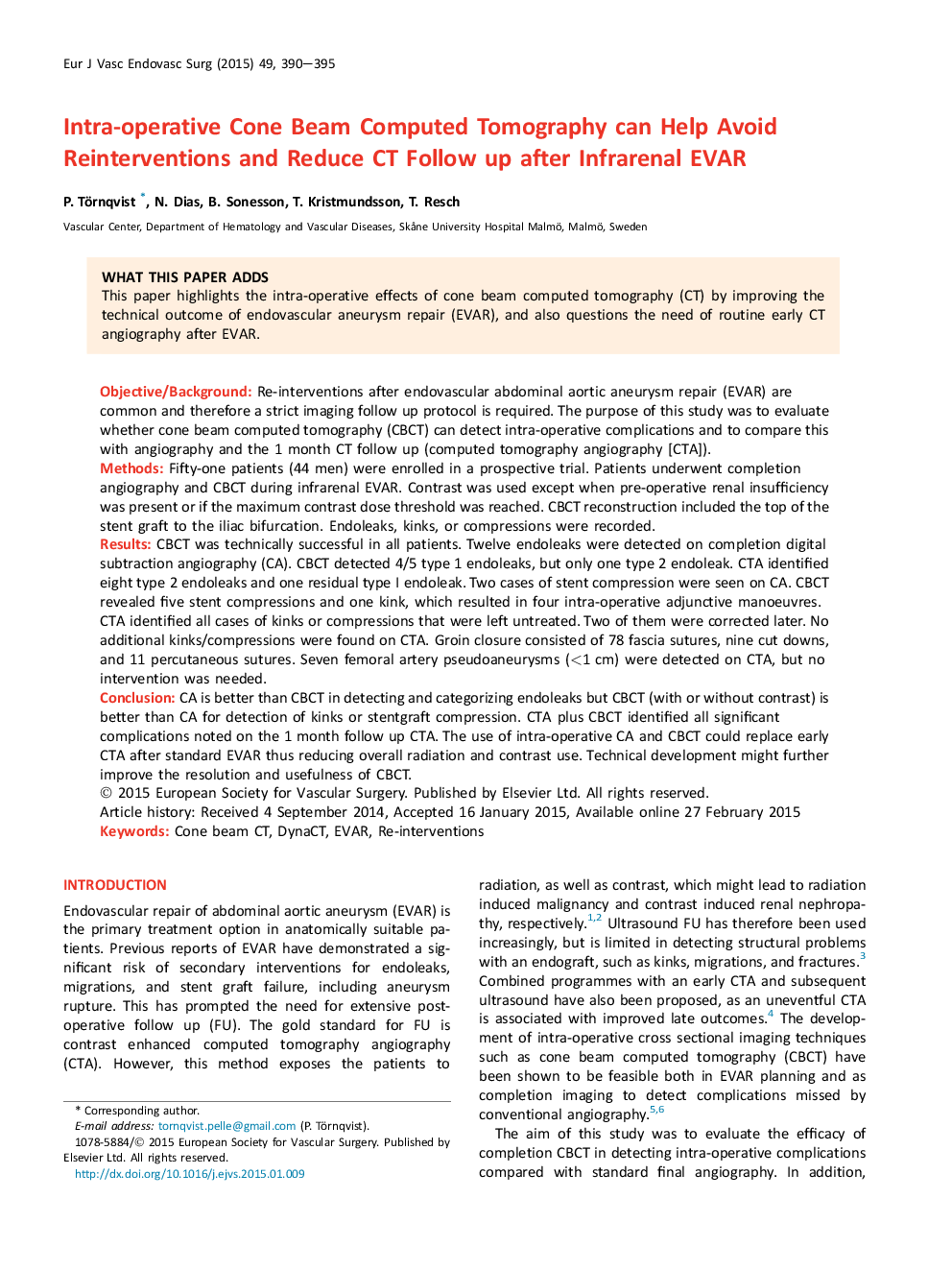| Article ID | Journal | Published Year | Pages | File Type |
|---|---|---|---|---|
| 2912057 | European Journal of Vascular and Endovascular Surgery | 2015 | 6 Pages |
Objective/BackgroundRe-interventions after endovascular abdominal aortic aneurysm repair (EVAR) are common and therefore a strict imaging follow up protocol is required. The purpose of this study was to evaluate whether cone beam computed tomography (CBCT) can detect intra-operative complications and to compare this with angiography and the 1 month CT follow up (computed tomography angiography [CTA]).MethodsFifty-one patients (44 men) were enrolled in a prospective trial. Patients underwent completion angiography and CBCT during infrarenal EVAR. Contrast was used except when pre-operative renal insufficiency was present or if the maximum contrast dose threshold was reached. CBCT reconstruction included the top of the stent graft to the iliac bifurcation. Endoleaks, kinks, or compressions were recorded.ResultsCBCT was technically successful in all patients. Twelve endoleaks were detected on completion digital subtraction angiography (CA). CBCT detected 4/5 type 1 endoleaks, but only one type 2 endoleak. CTA identified eight type 2 endoleaks and one residual type I endoleak. Two cases of stent compression were seen on CA. CBCT revealed five stent compressions and one kink, which resulted in four intra-operative adjunctive manoeuvres. CTA identified all cases of kinks or compressions that were left untreated. Two of them were corrected later. No additional kinks/compressions were found on CTA. Groin closure consisted of 78 fascia sutures, nine cut downs, and 11 percutaneous sutures. Seven femoral artery pseudoaneurysms (<1 cm) were detected on CTA, but no intervention was needed.ConclusionCA is better than CBCT in detecting and categorizing endoleaks but CBCT (with or without contrast) is better than CA for detection of kinks or stentgraft compression. CTA plus CBCT identified all significant complications noted on the 1 month follow up CTA. The use of intra-operative CA and CBCT could replace early CTA after standard EVAR thus reducing overall radiation and contrast use. Technical development might further improve the resolution and usefulness of CBCT.
